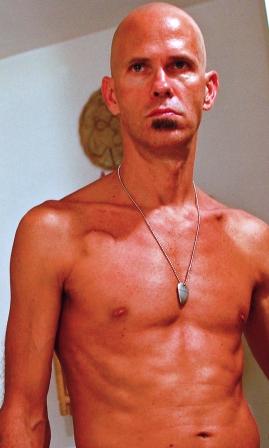A series of emails from one of our www.OneMileRunner.com readers (Nigel) from England prompted me to ask him if we could share his story – I thought it was a wonderful example of perseverance in our athletic careers. This is Nigel from England …I am 44 years old and have a sit down job. I started running about 15 years ago mainly as a way to stop the sedentary lifestyle and as we wanted children I thought getting fit would be a good idea. Things went well 2 mile runs became 3 then 4 then I went to a gym to build up general fitness 5 miles went to 6 miles then I would run 6 miles to the gym then exercise for 2 hours then run home. I have always suffered from flat feet but was told there was nothing that could be done so I would put up with the foot pain. 6 miles very soon became 12 miles and now I was running 4 times a week 2 short runs of 5 -6 miles. 1 run would be a hilly run, the other a speed run fartlek at weekend. I would do another short recovery run (slowly) for 6 miles then on Sunday morning was my main run now 15 miles (depending on how I felt, if my feet were bad it would be 6 miles). My mind was in this 100% and as distance went up so did speed a slow 6 mile plod went to 7 then 7.5 then 8 miles per hour and then the back pain started. I was told to keep exercising and maybe run on grass. I went to 6 or 7 running shops for advice on shoes (I still don’t have a pair I like). Then it all went wrong – pain down my legs and in my feet and up my back 15 mile runs were painful.
One Sunday I battled the pain and ran 24 miles (this was a killer and a big mistake). The time was OK (well for me I averaged 7 miles per hour) but something had gone badly wrong and I was now in pain it seemed to be all over. Arms, legs, chest, back, and legs. Stupid – I should have stopped. I went to physios and eventually 2 surgeons. It was a bulging disc causing all my problems as it was bulging out to the right. The main pain was on my left side though and they said the operation would remove the pain as I was now on morphine and off work and not sleeping – so I agreed. It didn’t work and the pain got worse! Any help would be appreciated…I had bad pain for 10 years in my back sciatica and also flat feet, I did some of your stretches and this has helped me so much the pain has eased and I an now off morphine and codeine. Now I want to run again, however, I don’t know if I should change foot strike (I am a heel runner) if I continue will this hurt my back (the operation pain is still there after 1 year) should I change to midfoot? I went to a podiatrist who created some insoles for flat feet and to align my legs. I tried some short runs landing on the midfoot but this gave me plantar fascitis, but only in my left foot (the worse flat foot). I tried various exercises to strengthen the arch. What would you suggest? My answer…Heel striking has a direct correlation to lower back pain. You can imagine how striking the heel with an extended leg can create pain that travels up to your back. So heel striking will exacerbate your back pain. Midfoot striking would alleviate your back pain, but it will inflame your Achilles tendon, gastrocnemius, and feet. I know people that have changed their foot strike to a midfoot strike – but it took a year to develop the muscles, ligaments, and tendons in their lower extremities. I do recommend you changing your foot strike to a midfoot landing, but please take your time with it. Short and infrequent runs at first, then gradually increase the dosage. It will take you time – you do not have the structure in your lower extremities to support a midfoot strike now – but it will come and your back pain will go away as you land properly with a bent knee.
Nigel’s response…
OK I know its going to be a long recovery and will have good and bad days, but I still haven’t felt this painless for some time. Just a mini update…
I have been doing some of the training exercises and went to a new physio. He asked where did you get these stretches from, so I said ONE MILE RUNNER he suggested keep doing them. I have been doing the stretching training every day and my plantar fascitis has now cleared also some pain from my back and legs has gone in fact so much I have gone from needing morphine to taking over the counter codomol. This has had the effect of helping me sleep better and so feeling fresher, unfortunately I now have the flu… I believe keeping a positive attitude has saved me from someone who takes pills to cure pain to someone who is removing the symptoms of why the pain started.
Next email from Nigel…
My physio suggested trying to run again. We decided that a 1 minute run 1 times per week would be a good start any pain and I back off and stretch of course I do a full warm up and cool down even for this 1 minute. I will do this for 1 month then add another minute, although it seems small I don’t want to start aggravating anything and the main concern is trying to get proper form, I keep stiff and upright and land on my forefoot running slowly to enforce form. I have been searching and keeping positive for 10 years finally my prayers are being answered, I knew there would be light at the end of the tunnel and it goes to show that you need to keep on pressing. My doctor said I would be on painkillers all my life and there is no other option! This was last month now I can virtually live without them all I needed was good advice. I downloaded the videos from YouTube and put them on a DVD I watch this at least once a week! Because although it sounds corny I want to run like you do. You should create a commercial DVD with these exercises. Thanks for the videos and the ONE MILE RUNNER. It’s keeping me positive and I have already set goals of running 5 minutes/ 10 then 20 heck I even have my goal back of a 3:30 marathon, I can feel it , running through the finish with the crowd cheering sweating and looking up at the clock 3:30 FINISH Nigel.
Here’s wishing Nigel a steady recovery. Thanks for the lesson on how perseverance can pay off…

